-
Radiation-resistant circuits from mechanical parts
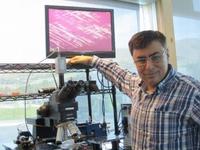
Engineers designed microscopic mechanical devices that withstand intense radiation and heat, so they can be used in circuits for robots and computers exposed to radiation in space, damaged nuclear power plants, or nuclear attack; the devices can also survive work in space
-
-
New sensors detect contaminants in water
Many organic contaminants in the air and in drinking water need to be detected at very low-level concentrations; researchers have investigated the use of graphene oxide films in which the semiconductor titanium dioxide (TiO2) and metal nanoparticles are deposited on opposite sides of the graphene surface
-
-
More effective radiation detection of cargo, baggage
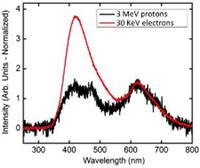
A new technique for radiation detection that could make radiation detection in cargo and baggage more effective and less costly for homeland security inspectors; the novel detection method relies on spectral shape discrimination (SSD), taking advantage of a new class of nanoporous materials known as metal-organic frameworks (MOFs)
-
-
B612 Foundation unveils first privately funded deep space mission
A private group plans to launch its own space telescope and place it in orbit around the sun; the mission will collect information about Earth-threatening asteroids, but also look for asteroids that may contain valuable raw materials for mining
-
-
Seismic sensors seek source of Spokane quakes
It has been a decade since a swarm of relatively mild earthquakes shook up parts of Spokane, Washington; now, armed with the right tools, scientists want to find out what was at fault
-
-
First-of-its-kind CO2 sensor network deployed in Oakland
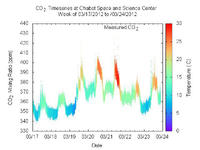
The City of Oakland will be ground zero for the first urban sensor network to provide real-time, neighborhood-by-neighborhood measurements of carbon dioxide and other air pollutants; the prototype network, being installed by chemists at the University of California, Berkeley, will employ forty sensors spread over a twenty-seven square-mile grid
-
-
Forecast: sharp increase in world oil production capacity, risk of price collapse

Oil production capacity is surging in the United States and several other countries at such a fast pace that global oil output capacity is likely to grow by nearly 20 percent by 2020, which could prompt a plunge or even a collapse in oil prices; the growth in oil output owes largely to a combination of high oil prices and new technologies such as hydraulic fracturing that are opening up vast new areas and allowing extraction of “unconventional” oil such as tight oil, oil shale, tar sands and ultra-heavy oil
-
-
Long-term priorities for U.S. nuclear physics program
Nuclear physics is a discovery-driven enterprise aimed at understanding the fundamental nature of visible matter in the universe; for the past hundred years, new knowledge of the nuclear world has also directly benefited society through many innovative applications
-
-
Predicting wave power helps double marine energy
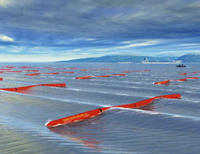
The energy generated from the oceans could be doubled using new methods for predicting wave power; researchers have devised a means of accurately predicting the power of the next wave in order to make the technology far more efficient, extracting twice as much energy as is currently possible
-
-
Growing interest in prairie cordgrassas a biofuel source

Until recently, prairie cordgrass (Spartina pectinata) has received comparatively little attention because, unlike the other types of switchgrass, it is not a good forage crop; as interest in energy crops and in feedstock production for cellulosic biofuels increases, however, prairie cordgrass is receiving more attention because it grows well on marginal land
-
-
Loo turns poo into power
Researchers have invented a new toilet system that will turn human waste into electricity and fertilizers and also reduce the amount of water needed for flushing by up to 90 percent compared to current toilet systems
-
-
Recycling nuclear fuel offers plentiful, clean energy
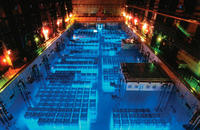
Currently, only about 5 percent of the uranium in a fuel rod gets fissioned for energy in a nuclear reactor; after that, the spent rods, still containing about 95 percent uranium fuel, are taken out of the reactor and put into permanent storage; researchers say that recycling used nuclear fuel could produce hundreds of years of energy from just the uranium that has already been mined, all of it carbon-free
-
-
Greater L.A. to heat up an average 4 to 5 degrees by mid-century
A groundbreaking new study shows that temperatures in the Los Angeles region to rise by an average of 4 to 5 degrees Fahrenheit by the middle of this century, tripling the number of extremely hot days in the downtown area and quadrupling the number in the valleys and at high elevations
-
-
Significant sea-level rise in a 2-degree warming world
Sea levels around the world can be expected to rise by several meters in coming centuries, if global warming carries on; even if global warming is limited to 2 degrees Celsius, global-mean sea level could continue to rise, reaching between 1.5 and 4 meters above present-day levels by the year 2300
-
-
Mystery surrounds explosives found on Swedish nuclear plant site
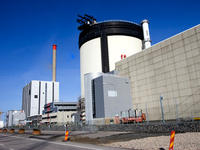
Mystery still surrounds the explosives found on the grounds of Sweden’s largest nuclear power plant last Wednesday. With police providing little information, a terrorist expert speculated the incident might have been an attempt, perhaps by terrorists, to test the security system of the Ringhals power plant with a later attack in mind
-
More headlines
The long view
Water Wars: A Historic Agreement Between Mexico and US Is Ramping Up Border Tension
As climate change drives rising temperatures and changes in rainfall, Mexico and the US are in the middle of a conflict over water, putting an additional strain on their relationship. Partly due to constant droughts, Mexico has struggled to maintain its water deliveries for much of the last 25 years, deliveries to which it is obligated by a 1944 water-sharing agreement between the two countries.
Trump Is Fast-Tracking New Coal Mines — Even When They Don’t Make Economic Sense
In Appalachian Tennessee, mines shut down and couldn’t pay their debts. Now a new one is opening under the guise of an “energy emergency.”
Smaller Nuclear Reactors Spark Renewed Interest in a Once-Shunned Energy Source
In the past two years, half the states have taken action to promote nuclear power, from creating nuclear task forces to integrating nuclear into long-term energy plans.
Keeping the Lights on with Nuclear Waste: Radiochemistry Transforms Nuclear Waste into Strategic Materials
How UNLV radiochemistry is pioneering the future of energy in the Southwest by salvaging strategic materials from nuclear dumps –and making it safe.
Model Predicts Long-Term Effects of Nuclear Waste on Underground Disposal Systems
The simulations matched results from an underground lab experiment in Switzerland, suggesting modeling could be used to validate the safety of nuclear disposal sites.
